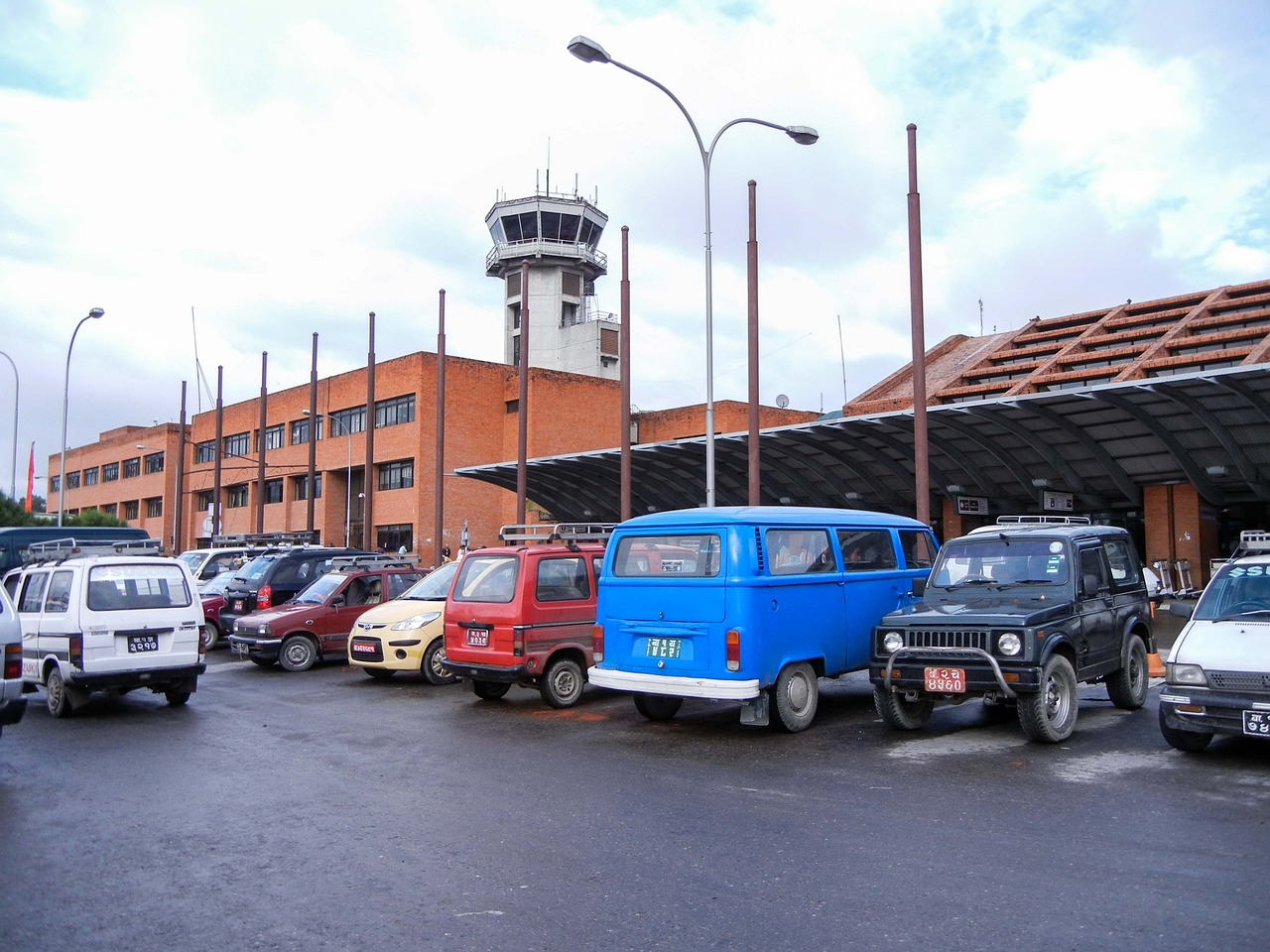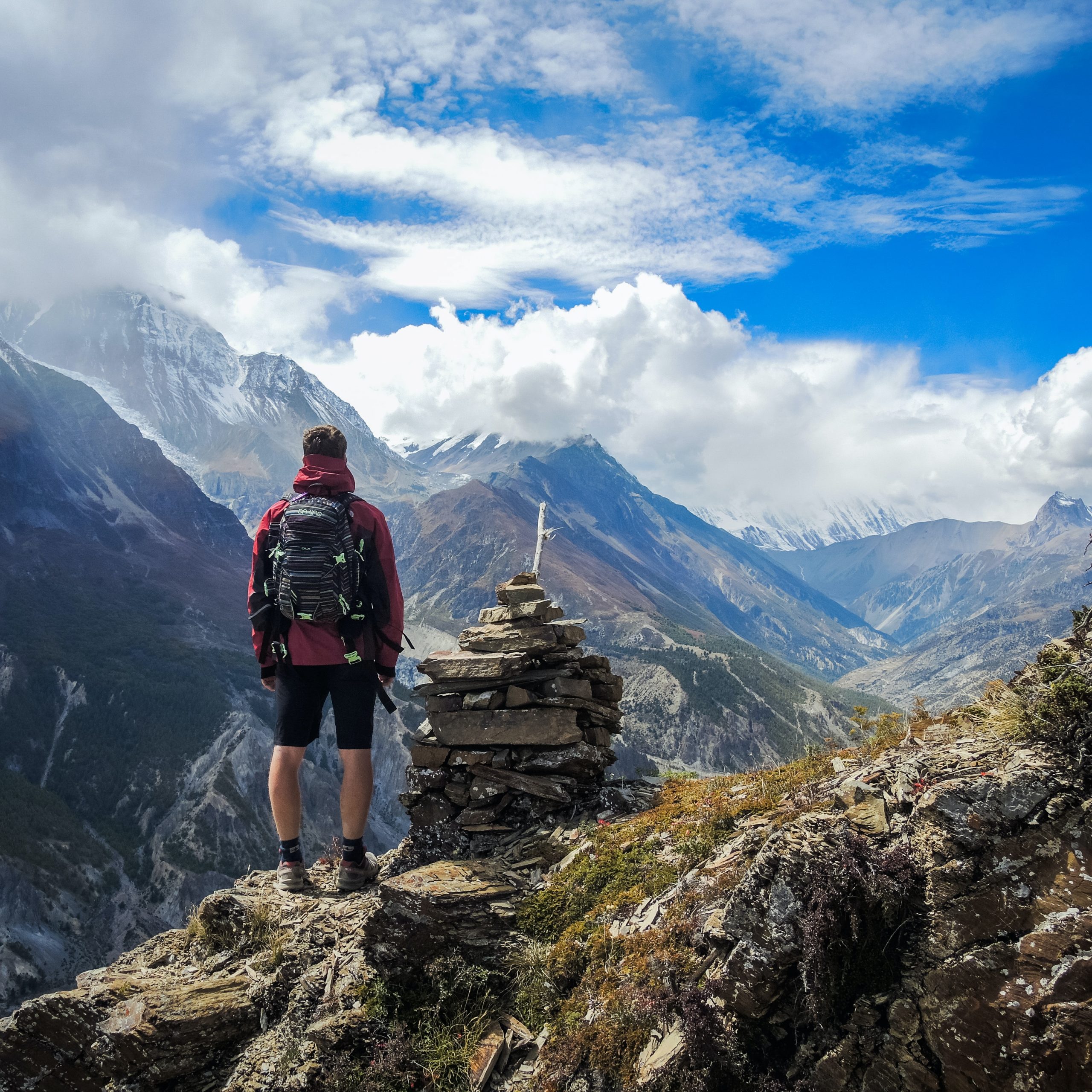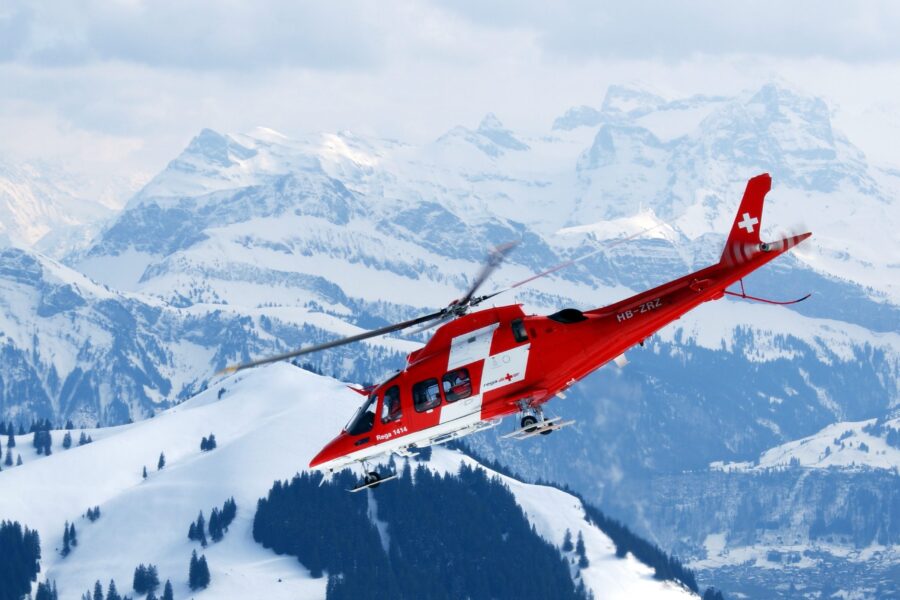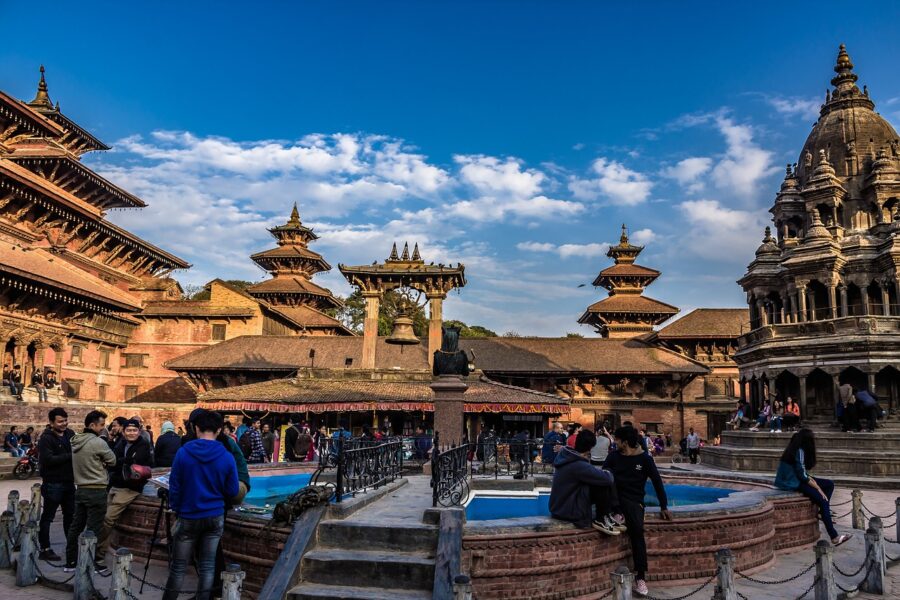25 Days and 24 Nights
Daily Tour
Unlimited
English
About this tour
Nestled in the northwestern part of Nepal, the Upper Dolpo region is a testament to the raw, untamed beauty of the Himalayas. This remote and mystical land has long captured the imagination of trekkers and adventurers seeking an off-the-beaten-path experience. The Upper Dolpo Trek, an extraordinary journey through this rugged terrain, offers a unique blend of cultural immersion, breathtaking landscapes, and the challenge of navigating through one of the most isolated regions on Earth.

Geography and Location of Upper Dolpo Trek:
Upper Dolpo is situated in the rain shadow of the Dhaulagiri and Annapurna ranges, shielding it from the monsoon rains and contributing to its arid, high-altitude landscape. Tibet borders this hidden gem to the north, and the Dhaulagiri and Churen Himal ranges to the south and west, creating a remote enclave that has retained its cultural and natural authenticity over the centuries.
The trek typically starts in Jhupal, a small airstrip town accessible by a flight from Nepalgunj. Then, it ventures through the rugged paths of Dolpo, passing through Shey Phoksundo National Park, home to the deepest lake in Nepal, Phoksundo Lake. The trek reaches its pinnacle at Shey Gompa, a monastery steeped in ancient Tibetan Buddhist traditions.
Cultural Richness of Upper Dolpo Trek:
The Dolpo-pa, a community with a distinct culture and language with Tibetan roots, predominantly inhabits the Upper Dolpo region. The locals here have preserved their unique way of life, relying on yak herding, trade, and agriculture in the limited arable land available. The ancient monasteries and chortens that dot the landscape serve as a testament to the region’s rich Buddhist heritage.
As trekkers traverse the quaint villages of Ringmo, Dho Tarap, and others, they get a glimpse into the traditional lifestyle of the Dolpo-pa people. Often made of stone and wood, the homes reflect the resilience required to survive in this harsh environment. The locals’ warm hospitality and the chance to witness traditional ceremonies provide an enriching cultural experience for those undertaking the Upper Dolpo Trek.
Natural Splendor of Upper Dolpo Trek:
The trek leads adventurers through diverse landscapes, from terraced fields and dense forests to arid high-altitude plateaus. One of the journey’s highlights is the visit to Phoksundo Lake, a pristine body of turquoise water surrounded by snow-capped peaks. The sight of the lake against the backdrop of the barren landscape is a breathtaking moment that stays etched in the memory of those fortunate enough to experience it.
The trek also offers spectacular views of the Dhaulagiri and Kanjirowa mountain ranges, with the opportunity to witness the mesmerizing play of light and shadow on the rugged peaks during sunrise and sunset. The barren beauty of the landscape is complemented by the unique flora and fauna adapted to the harsh alpine environment.
Challenges and Rewards:
The Upper Dolpo Trek is not for the faint-hearted. Trekkers must be prepared for challenging terrains, high altitudes, and rapidly changing weather conditions. The trails often ascend to heights exceeding 5,000 meters (16,400 feet), demanding good fitness and acclimatization. The region’s remoteness means that facilities and infrastructure are minimal, requiring trekkers to be self-sufficient and well-prepared.
However, the challenges are rewarded with an unparalleled sense of accomplishment and the chance to witness landscapes and cultures that few have experienced. The purpose of isolation and immersion in nature contribute to a unique adventure contrasting with more popular trekking destinations in Nepal.
Permits and Regulations:
Due to its remote location and to preserve the region’s fragile ecosystem and cultural heritage, the Upper Dolpo Trek requires special permits. Trekkers must obtain the Shey Phoksundo National Park permit, the Restricted Area Permit for Upper Dolpo, and the Trekkers’ Information Management System (TIMS) card. These permits are typically arranged through a registered trekking agency in Nepal.
Best Time to Trek:
The Upper Dolpo Trek is best undertaken during the trekking seasons of spring (March to May) and autumn (September to November). During these periods, the weather is relatively stable, offering clear skies and comfortable temperatures for trekking. The winter months are incredibly harsh, with temperatures dropping well below freezing, and the monsoon season brings the risk of landslides and difficult trail conditions.
The Upper Dolpo Trek is the epitome of adventure, offering a rare opportunity to explore a region that has remained untouched by modernity. It is a journey through time and nature, where trekkers witness the resilience of the landscape and its inhabitants. The trek combines the thrill of challenging terrain with the serenity of pristine landscapes, providing an experience that goes beyond the physical challenges of trekking.
For those seeking an authentic Himalayan adventure away from the crowds, the Upper Dolpo Trek beckons with its promise of cultural richness, natural splendor, and the indomitable spirit of exploration. It is a pilgrimage through a land where time seems to stand still, leaving an indelible mark on the hearts of those who undertake this extraordinary journey.
Please Follow Us For more Updates :
Website : Base Camp Trip
Highlights
- Shey Phoksundo National Park exploration
- Phoksundo Lake's stunning blue waters
- Ancient monasteries like Shey Gompa
- Immerse in Dolpo's unique Tibetan culture
- Conquer high mountain passes (Kang La, Saldang La)
- Traditional villages: Dho Tarap, Saldang
- Dho Tarap Valley's stone houses and monasteries
- Witness nomadic herding culture
- Cultural insights and interactions
- Diverse landscapes: meadows, canyons, high-altitude terrain
- Environmentally responsible trekking
- Base camp comfort and secure accommodation
- Participation in local ceremonies
- Memorable Himalayan experience with natural beauty and cultural richness.
Included/Excluded
- Airport transfers and accommodation in Kathmandu
- Domestic flights to and from the trek starting point
- Full-board meals during the trek
- Necessary permits for Upper Dolpo Trek
- Experienced trekking guide
- Porter services for trekking equipment
- Provision of essential climbing equipment
- Support staff for logistics and camp setups
- Comprehensive first aid kit and emergency evacuation arrangements
- Guided sightseeing tour in Kathmandu
- Cultural interactions with local communities
- Adherence to environmentally responsible practices
- Coordination of logistics and transportation services
- Detailed itinerary and pre-trek briefing
- Accommodation at base camp
- Base camp services, including dining facilities
- Trekking certificate upon completion
- International flights to and from Nepal
- Personal climbing gear and equipment
- Comprehensive travel and trekking insurance
- Visa fees and related expenses for entry into Nepal
- Additional meals, snacks, and personal expenses
- Alcoholic beverages and non-inclusive beverages
- Gratuity for guides, support staff, and porters
- Costs arising from unforeseen events (natural disasters, political instability)
- Additional permits for side excursions or deviations from the standard itinerary
- Optional activities or excursions not specified in the expedition itinerary.
Itinerary

Your journey commences with an arrival at Tribhuvan International Airport in Kathmandu, situated at an elevation of 1,345 meters. As you step onto Nepalese soil, a representative will warmly welcome you and facilitate your transfer to a comfortable hotel. This initial day serves as an opportunity to acclimate to the new surroundings, and, if time allows, you can explore the vibrant local market, immersing yourself in the rich colors, sounds, and flavors of Kathmandu. The overnight stay at the hotel marks the beginning of your Himalayan adventure.

The second day is dedicated to essential pre-trip preparations. You'll participate in a comprehensive pre-trip meeting where details of the upcoming adventure will be discussed, and any queries you may have will be addressed. Following this meeting, embark on a guided sightseeing tour around the Kathmandu Valley. Visit iconic landmarks such as Kathmandu Durbar Square, Swayambhunath (Monkey Temple), Patan Durbar Square, Pashupatinath Temple, and Boudhanath Stupa. This cultural immersion provides a deeper understanding of Nepal's architectural and historical treasures. Conclude the day with a comfortable overnight stay at the hotel.

A short one-hour flight takes you to Nepalgunj, a city in the western Terai region of Nepal. Nestled close to the Indian border, Nepalgunj presents a unique cultural blend. Spend the night at a local hotel, preparing for the forthcoming adventure.

The day begins with a 35-minute scenic flight to Juphal (2,400 meters), a small airstrip serving as the gateway to your trek. From Juphal, embark on a 3-hour trek to Dunai (2,150 meters). This initial trek introduces you to the enchanting landscapes of the Dolpo region, setting the tone for the days to come. Overnight accommodation is provided in tented camps, offering a taste of the immersive trekking experience.

Embark on a captivating trek through remote villages and challenging mountain passes, each day bringing forth new landscapes and cultural encounters:
-
Trek to Ankhe (Day 05): The trail leads you to Ankhe (2,660 meters) in approximately 6 hours, showcasing the diverse topography of the region.
-
Trek to Renje (Day 06): A 7-hour trek to Renje (3,104 meters) immerses you deeper into the Himalayan terrain, offering breathtaking vistas along the way.
-
Trek to Phoksundo Lake (Day 07): Spend 6.5 hours trekking to the mesmerizing Phoksundo Lake (3,600 meters), surrounded by pristine wilderness.
-
Trek to Phoksundo Khola (Day 08): Trek for 6 hours to Phoksundo Khola (3,507 meters), an integral part of the trekking adventure.
-
Trek to Phoksundo Bhanjyang (Day 09): Challenge yourself with a 7-hour trek to Phoksundo Bhanjyang (4,402 meters), reaching higher altitudes.
-
Cross Kang La Pass and Trek to Shey Gompa (Day 10): Conquer the Kang La Pass (5,151 meters) and trek for 7 hours to Shey Gompa (4,126 meters), a significant leg of the journey.
-
Rest and Exploration at Shey Gompa (Day 11): A well-deserved day of rest and exploration in the unique enclave of Shey Gompa, delving into its cultural and spiritual significance.
-
Cross Saldang La Pass and Trek to Namduna Gaon (Day 12): Navigate the Saldang La Pass (4,785 meters) during a 7-hour trek, concluding in the culturally rich Namduna Gaon (4,400 meters).
-
Trek to Saldang (Day 13): A 4-hour trek leads you to Saldang (3,903 meters), where you'll encounter the local way of life.
-
Trek to Sibu (Day 14): Journey for 6 hours to Sibu (3,942 meters), an idyllic village in the heart of the Dolpo region.
-
Trek to the Foot of Jeng La (Day 15): Trek for 5 hours to the foot of the Jeng La Pass (4,369 meters), preparing for the upcoming ascent.
-
Cross Jeng La Pass and Trek to Tokyu Gaon (Day 16): Conquer the challenging Jeng La Pass (4,845 meters) and trek for 7 hours to Tokyu Gaon (4,240 meters), celebrating a significant accomplishment.
-
Trek to Dho Tarap (Day 17): A 4.5-hour trek brings you to Dho Tarap (4,090 meters), a village steeped in cultural richness.
-
Trek to Serkam (Day 18): Trek for 6.5 hours to reach Serkam (3,630 meters), witnessing the changing landscapes of the Dolpo region.
-
Trek to Khani Gaon (Day 19): A 7-hour trek introduces you to Khani Gaon (2,550 meters), showcasing the diverse cultural tapestry.
-
Trek to Tarakot (Day 20): Trek for 4 hours to Tarakot (2,281 meters), a location of historical significance.
-
Trek to Dunai (Day 21): Conclude the trek with a 5-hour journey back to Dunai (2,052 meters), retracing your steps to the starting point.

Embark on a 3-hour trek from Dunai to Juphal (2,404 meters), where your journey began. This day allows for reflection on the remarkable trekking adventure through the Dolpo region.

Experience a total flight time of 1 hour and 35 minutes as you journey from Juphal to Kathmandu via Nepalgunj. Upon arrival in Kathmandu, settle into your hotel, and the remainder of the day is designated for leisure and reflection. In the evening, partake in a farewell dinner, reminiscing about the highlights of your trek.

Enjoy a leisure day in Kathmandu, providing an opportunity for rest or additional exploration of the city. In the evening, a farewell dinner is organized, allowing you to share stories and memories with your fellow trekkers. This marks the conclusion of your Himalayan adventure.

The final day involves the transfer to Tribhuvan International Airport for your departure. As you bid farewell to Nepal, carry with you the indelible memories of the Dolpo Circuit Trek and the enchanting landscapes and cultures encountered along the way.
Durations
Languages
Frequently asked questions
The best time to undertake the Upper Dolpo Trek is during the spring and autumn trekking seasons. Specifically:
- Spring (March to May): This is an excellent time to trek in Upper Dolpo. The weather is generally stable, with mild temperatures and blooming rhododendrons adding color to the landscape. The days are longer, providing more daylight for trekking, and the views of the surrounding mountains are often crystal clear.
- Autumn (September to November): Another optimal period for the Upper Dolpo Trek, autumn brings clear skies, stable weather, and cool temperatures. The scenery is breathtaking as the autumnal hues paint the landscapes, creating a picturesque setting. This season is also post-monsoon, reducing the risk of rain and ensuring better trail conditions.
Both spring and autumn offer favorable conditions for trekking, with minimal precipitation and comfortable temperatures. It's important to note that the winter months (December to February) are frigid, with harsh conditions and heavy snowfall, making trekking challenging. The monsoon season (June to August) brings rain, landslides, and rugged trail conditions, making it less suitable for walking in this region.
The Upper Dolpo Trek is considered challenging due to various factors, including high altitudes, rugged terrain, and the remote and isolated nature of the region. Here are some key challenges associated with the trek:
- High Altitude: The trek reaches altitudes exceeding 5,000 meters (16,400 feet). Trekkers may be susceptible to altitude sickness, and proper acclimatization is crucial. Altitude-related issues can include headaches, nausea, and fatigue, so it's essential to ascend gradually and allow the body time to adjust.
- Remote and Isolated: Upper Dolpo is one of Nepal's most remote and least developed regions. Facilities and infrastructure are minimal, and trekkers should be prepared to be self-sufficient. The remoteness adds to the adventure but also requires careful planning and preparation.
- Weather Conditions: Weather in the Himalayas can be unpredictable. Trekkers may encounter rapidly changing weather conditions, including cold temperatures, strong winds, and the possibility of snowfall, even during the trekking seasons. Being prepared for a range of weather scenarios is essential.
- Long and Challenging Trails: The trek involves long daily walking hours, often on challenging and uneven terrain. Trekkers should have a good fitness level to navigate the steep ascents and descents, rocky paths, and high-altitude plateaus.
- Limited Accommodations: Accommodations in Upper Dolpo range from basic teahouses to camping. While teahouses provide simple lodgings, camping may be required in certain areas. Trekkers need to be flexible and adaptable to different accommodation options.
- Permits and Regulations: Obtaining the necessary licenses, including the Restricted Area Permit for Upper Dolpo, adds an administrative challenge. Planning ahead and working with a registered trekking agency to arrange the required permits is essential.
Despite the challenges, the Upper Dolpo Trek offers a unique and rewarding experience for those seeking adventure and a connection with untouched landscapes and cultures. To maximize enjoyment and safety, it is recommended that trekkers have prior trekking experience, good physical fitness, and proper acclimatization strategies in place. Hiring an experienced guide and trekking with a reputable agency can also enhance the overall experience and safety of the journey.
Altitude sickness is a concern on the Upper Dolpo Trek due to the high elevations reached during the journey. The trek reaches altitudes exceeding 5,000 meters (16,400 feet), and trekkers risk experiencing altitude-related issues if proper precautions are not taken.
Altitude, or acute mountain sickness (AMS), occurs when the body doesn't acclimate well to the reduced oxygen levels at higher altitudes. Symptoms of altitude sickness can include headaches, nausea, dizziness, fatigue, and difficulty sleeping. In severe cases, it can progress to more serious conditions like high-altitude pulmonary edema (HAPE) or high-altitude cerebral edema (HACE).
To minimize the risk of altitude sickness on the Upper Dolpo Trek, consider the following measures:
- Acclimatization: Take sufficient time for acclimatization at higher altitudes. The trek itinerary should include rest days at strategic points to allow the body to adjust to the reduced oxygen levels.
- Hydration: Stay well-hydrated throughout the trek. Dehydration can exacerbate the symptoms of altitude sickness. Drink plenty of water, but avoid excessive caffeine and alcohol consumption.
- Moderate Ascent: Ascend gradually to higher altitudes. Sudden and rapid ascents increase the risk of altitude sickness. A well-planned itinerary with gradual elevation gains is crucial.
- Recognize Symptoms: Be aware of the symptoms of altitude sickness and inform your guide or trekking companions if you experience any discomfort. Prompt action, such as descending to a lower altitude, can help alleviate symptoms.
- Medication: Consult a healthcare professional before the trek to discuss using medications like acetazolamide (Diamox) to help prevent altitude sickness. However, medication is not a substitute for proper acclimatization.
- Physical Fitness: Maintain good physical fitness before embarking on the trek. Regular exercise can contribute to better overall health and wellness, making it easier for the body to adapt to higher altitudes.
It's essential for trekkers to be proactive in managing altitude sickness and to prioritize their health and safety. Trekking with an experienced guide who is familiar with the region. Its challenges can also enhance the safety of the journey. If symptoms of altitude sickness persist or worsen, descending to a lower altitude is the most effective treatment.
While it is technically possible to trek independently in the Upper Dolpo region, hiring a licensed guide and, in some cases, a porter is highly recommended. Several factors contribute to this recommendation:
- Remote and Isolated Terrain: Upper Dolpo is one of Nepal's most remote and least developed regions. The trails can be challenging to navigate, and the region's isolation means limited facilities and resources. A guide familiar with the local terrain, courses, and logistics is invaluable.
- Cultural Immersion: A licensed guide can enhance the artistic experience by providing insights into the local traditions, customs, and history. The Dolpo-pa people have a unique way of life, and a guide can facilitate meaningful interactions and help bridge the language barrier.
- Permit Requirements: Upper Dolpo requires special permits, including the Restricted Area Permit for Upper Dolpo. Navigating the permit process and adhering to regulations is more straightforward with the assistance of a guide, who can handle the administrative aspects and ensure all necessary permits are obtained.
- Safety: The remote nature of the trek and the potential for altitude-related issues make safety a priority. A guide is trained to recognize symptoms of altitude sickness and other health concerns and can assist in emergencies. Additionally, having a guide provides an added layer of security in case of unforeseen circumstances.
- Logistical Support: A guide can arrange accommodations, meals, and transportation, making the trek more convenient and enjoyable. They are familiar with local teahouse camping spots and can adapt the itinerary based on weather conditions and other factors.
While hiring a guide is highly recommended, trekkers experienced in high-altitude trekking, navigation, and wilderness survival may choose to trek independently. However, even experienced trekkers should be well-prepared for the challenges posed by the remote and high-altitude conditions of Upper Dolpo.
If trekking independently, obtaining the required permits, thoroughly researching the route, carrying adequate supplies, and preparing for unexpected challenges are essential. Regardless of the choice to trek independently or with a guide, trekkers should prioritize safety, respect local customs, and minimize their impact on the fragile environment of Upper Dolpo.
Packing for the Upper Dolpo Trek requires careful consideration due to the remote and challenging nature of the region. Here is a comprehensive packing list to help ensure you are well-prepared for the trek:
Clothing:
- Lightweight, moisture-wicking base layers
- Insulating layers (fleece or down jacket) for cold temperatures
- Waterproof and windproof jacket and pants
- Trekking pants and shorts
- Long-sleeved shirts for sun protection
- Thermal underwear for colder days
- Waterproof and insulated gloves
- Warm hat and sun hat for different weather conditions
- Good-quality, broken-in hiking boots with ankle support
- Lightweight and comfortable trekking socks
Gear and Equipment:
- Backpack (50-70 liters) with a rain cover
- Sleeping bag suitable for cold temperatures (rated for at least -10°C/14°F)
- Sleeping pad for insulation from the hard ground
- Trekking poles for stability and support
- Headlamp or flashlight with extra batteries
- Sunglasses with UV protection
- Water bottles or a hydration system
- Water purification tablets or a water filter
- Duffel bag or a large backpack for porters (if applicable)
- Daypack for carrying essentials during day hikes
Personal Items:
- Personal identification, passport, and necessary permits
- Travel insurance with coverage for trekking at high altitudes
- Basic toiletries (toothbrush, toothpaste, biodegradable soap, etc.)
- Quick-dry towel
- Sunscreen with a high SPF rating
- Lip balm with sun protection
- Personal first aid kit (bandages, blister treatment, pain relievers, etc.)
- Insect repellent
- Multi-tool or knife
- Camera or smartphone for capturing memories
Electronics:
- Camera or smartphone for photography
- Power bank and charging cables
- Portable solar charger (optional)
- International plug adapter
Miscellaneous:
- Trekking map and guidebook
- Notepad and pen
- Snacks (energy bars, nuts, trail mix)
- Lightweight, quick-dry towel
- Sewing kit for minor repairs
- Trash bags for waste disposal (practice Leave No Trace principles)
Optional Items:
- Gaiters for protection against snow and debris
- Buff or scarf for added warmth
- Trekking umbrella (useful for rain or sun)
- Down booties or camp shoes for evenings
- Portable altitude sickness prevention medication (consult with a healthcare professional)
Pack efficiently and prioritize lightweight, moisture-wicking, and versatile clothing and gear. Remember that the weather can vary, so it's essential to be prepared for various conditions. Hiring a licensed guide can help with logistics and ensure you have everything you need for a safe and enjoyable trek in Upper Dolpo.













Leave a review